NASA unveiled full-color images from the $11 billion James Webb Space Telescope (JWST) on Tuesday, marking the first of what is sure to be many releases from the super powerful optical instrument. But even taken by themselves, these five images mark a massive achievement and the culmination of a 26-year-long process to give humanity an even more detailed look into the early universe.
The image reveal today followed the initial image release by President Joe Biden on Monday. That shot, named “Webb’s First Deep Field,” showed the cluster SMACS 0723, a vast swirl of galaxies that in actuality only represents a slice of the universe the size of “a grain of sand on the tip of your finger at arm’s length,” as NASA Administrator Bill Nelson put it on the livestream.
Today’s revelations include a galactic cluster and a black hole; the atmosphere of a distant planet; a distant star’s epic death knell; and a “stellar nursery” where stars are born. We’ve gotten a look at some of these targets before, thanks to JWST’s predecessor, the Hubble Space Telescope, and all of them were known to astronomers. But due to the unprecedented sensitivity of JWST’s instruments and its capacity to view objects in the infrared spectrum, we’re able to see these galactic forms with more clarity than ever before.
“Oh my goodness, it works,” Jane Rigby, Webb’s operations project scientist, said upon seeing the first focused images from the observatory. “And it works better than we thought.”
Signs of water and clouds on a puffy exoplanet
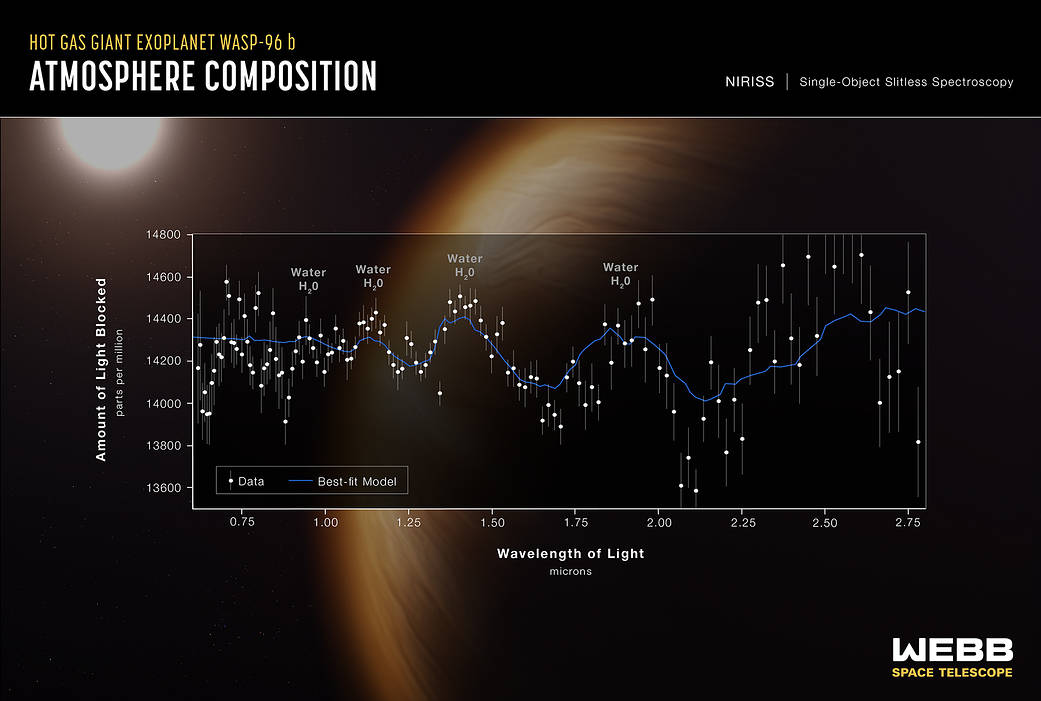
There are over 5,000 confirmed exoplanets — or planets which orbit a star other than our sun — in the Milky Way alone. The existence of exoplanets raises a fundamental question: Are we alone in the universe? Indeed, the explicit goal of NASA’s Exoplanet Program is to find signs of life in the universe; now, thanks to JWST, scientists can capture more information about these planetary bodies, and hopefully learn more about whether life exists on these planets and, if so, under what conditions it can thrive.
That brings us to WASP-96 b, an exoplanet that’s located around 1,150 light-years away. It’s a large gas giant that’s more than twice as small in mass as Jupiter, but is 1.2 times larger in diameter. In other words, it’s “puffy,” as NASA put it. It also has a short orbital period around its star and is relatively uncontaminated by light emitted from nearby objects, making it a prime target for JWST’s optical power.
But this isn’t an image of an exoplanet’s atmosphere. It’s an image of a the exoplanet’s transmission spectrum, which might be less than exciting at first glimpse. However, this spectrum, captured with the telescope’s near-infrared imager and slitless spectrograph (NIRISS), showed unambiguous signs of water and even evidence of clouds. Clouds! It’s an “indirect method” to study exoplanets, James Webb deputy project scientist Knicole Colón explained in a media briefing, but the telescope will also use direct observation methods over the next year as well.
NIRISS can also capture evidence of other molecules, like methane and carbon dioxide. While these weren’t observed in WASP-96 b, they could be detectable in other exoplanets that JWST observes.
Shells of gas and dust expelled by dying stars
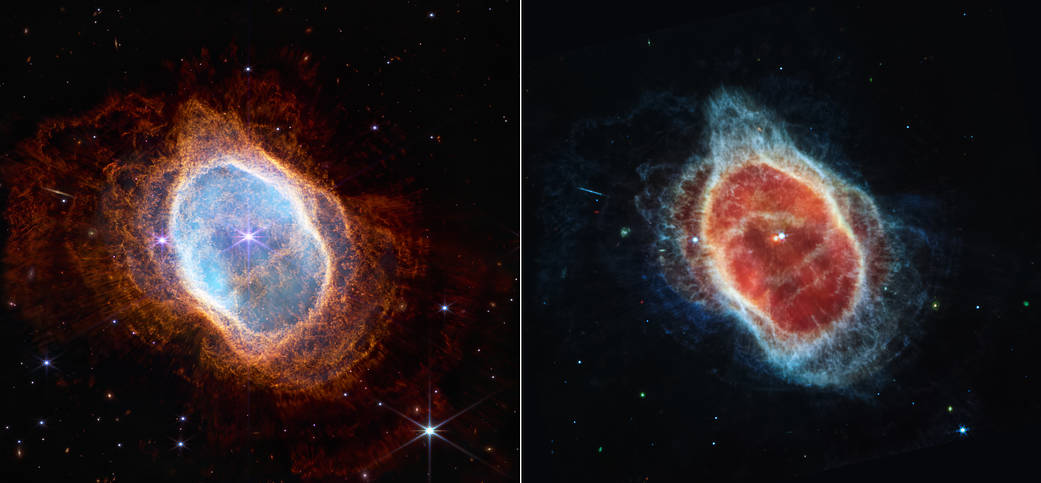
JWST also took a look at a planetary nebula officially called NGC 3132, or the “Southern Ring Nebula,” providing scientists with more clues into the fate of stars at the end of their life cycles. NASA showed off two side-by-side images of this nebula, one taken in near-infrared light (left) with the scope’s NIRCam and a second image taken with JWST’s mid-infrared instrument (right).
A planetary nebula is an area of cosmic dust and gas generated by dying stars. This particular one, which is around 2,500 light years away, was also captured by the Hubble Space Telescope, but NASA says this updated image from JWST offers more detail of the elegant structures that surround the binary star system.
Of the two stars (best seen in the right image), there’s a dimmer, dying star located on the lower left and a brighter star that’s in an earlier stage of its life. The images also show what NASA calls “shells” surrounding the stars, each of which mark a period when the dimmer, dying star (the white dwarf in the lower left in the right image) lost some of its mass. It’s been expelling this material for thousands of years, and NASA said its three-dimensional shape is more akin to two bowls placed together at their bottoms, opening away from each other.
The cosmic dance of Stephan’s Quintet
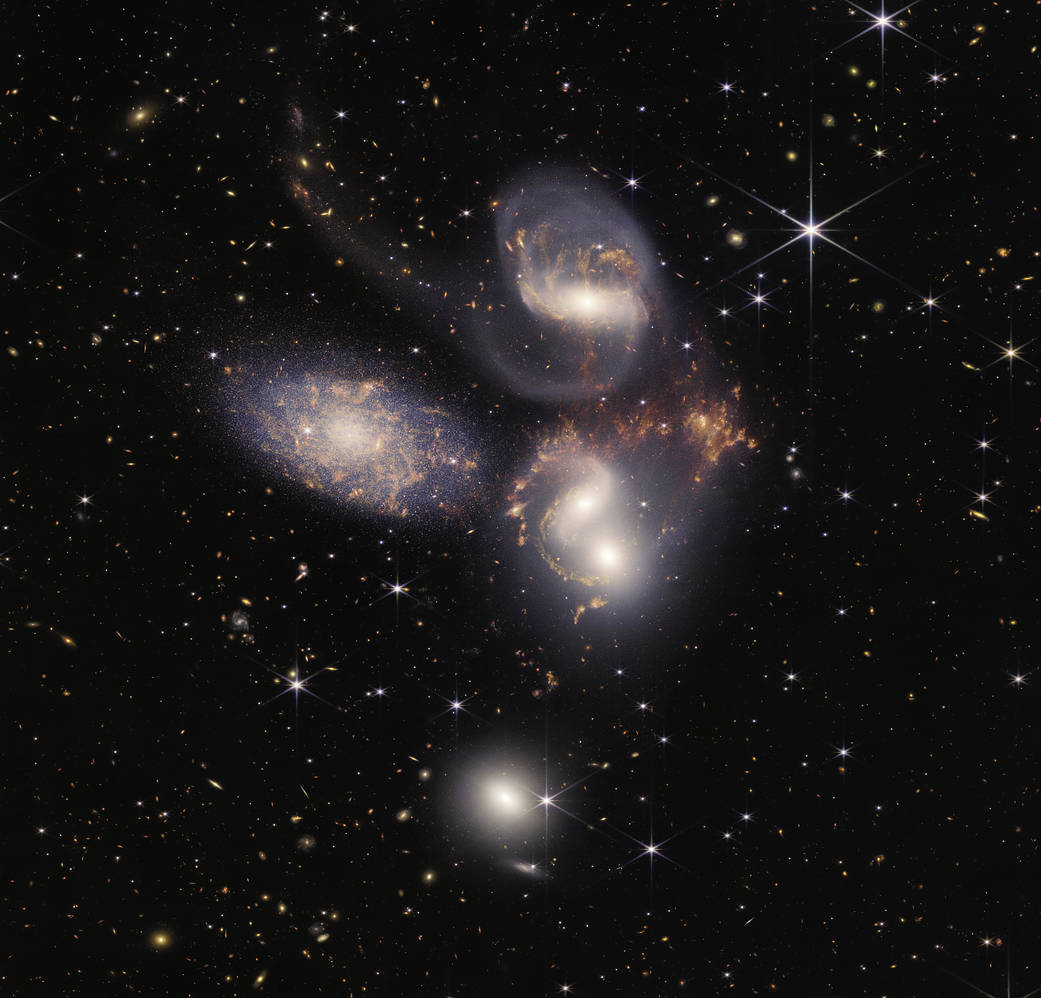
Stephan’s Quintet, first observed by French astronomer Édouard Stephan in 1877, shows the strange interaction of five galaxies to a degree of detail never been seen before. This final image is composed of nearly 1,000 individual images and 150 million pixels, and it marks the largest image from JWST so far, representing around one-fifth of the moon’s diameter.
The image is slightly misleading; the leftmost galaxy is actually far in the foreground, around 40 million light years away from us, while the remaining four galaxy systems are around 290 million light years away. These four galaxies are clustered so close together, relatively speaking, that they actually interact with each other.
The image even reveals a supermassive black hole, located at the center of the topmost galaxy, that’s roughly 24 million times the mass of the sun.
I think this one might actually just be heaven
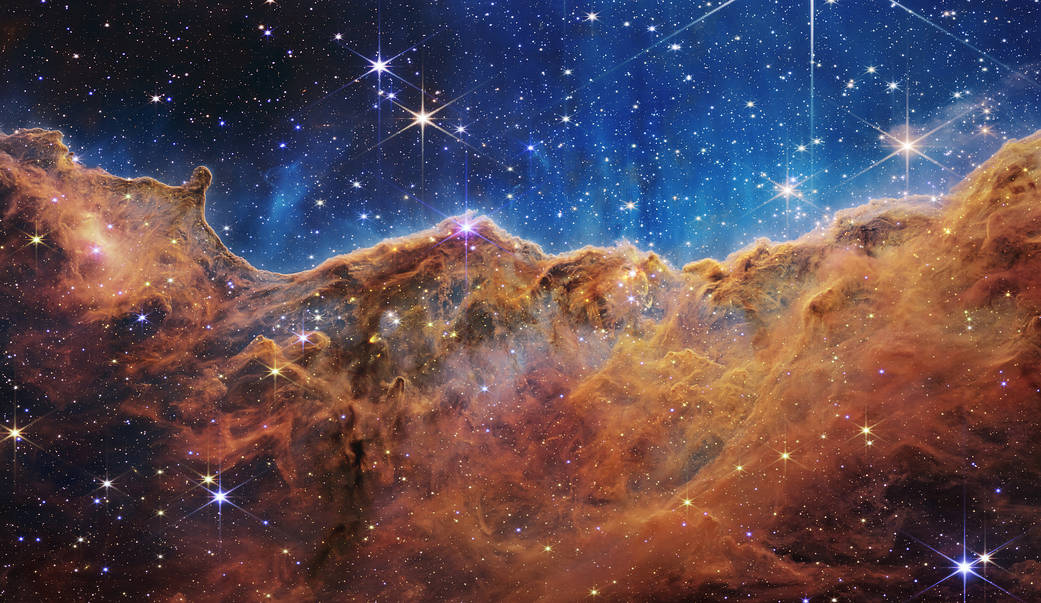
JWST is also giving us a more in-depth look at Carina nebula, a region of the Milky Way around 7,600 light years away. While we’ve looked at Carina with Hubble, the new image shows hundreds of new stars, thanks to JWST’s ability to pierce through cosmic dust. The Carina nebula reveals that the birth of stars is not a peaceful, placid affair, but one characterized by highly unstable processes that can, in some ways, be as destructive as they are generative.
The amber landscape that flows across the bottom of the image marks the edge of the massive, chaotic star-forming region of the nebula — so massive that the highest points in this amber band, which NASA calls the “Cosmic Cliffs,” are around seven light-years high. Data from JWST will give scientists more information into the star formation process and may help address why certain numbers of stars form in certain regions, as well as how stars end up with the mass they have.
Ultimately, these achievements are just the beginning. Scientists still have plenty of questions — about exoplanets, the formation of the universe and more — and now they have a new powerful tool in their arsenal to seek answers.
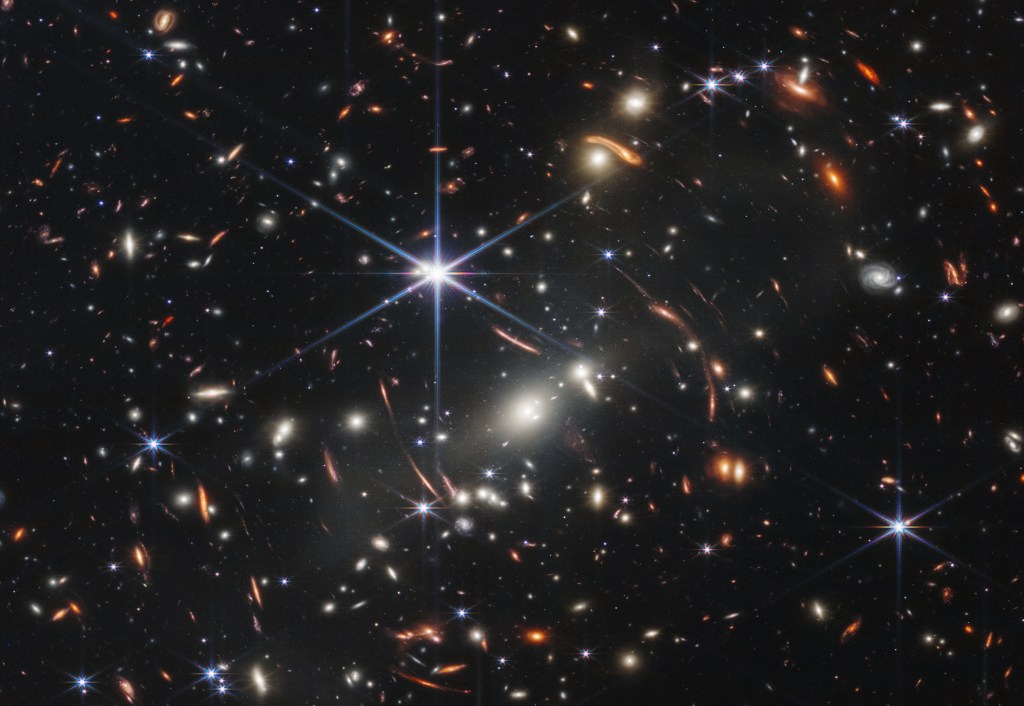





























Comment